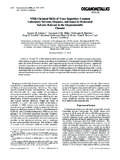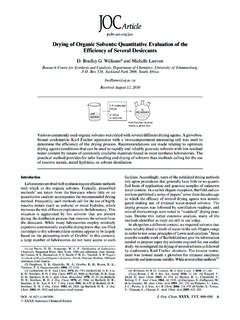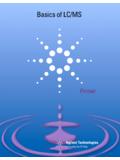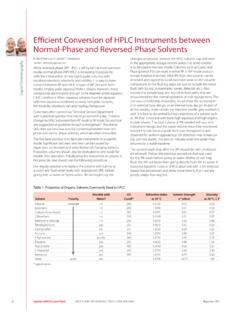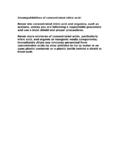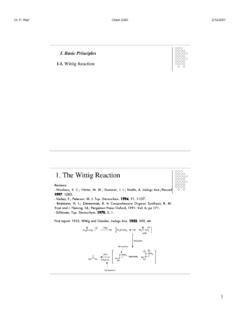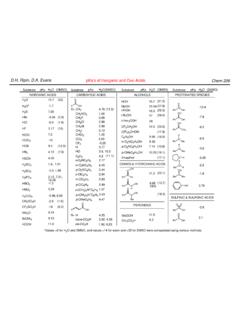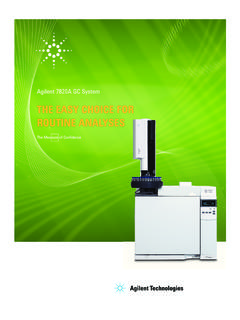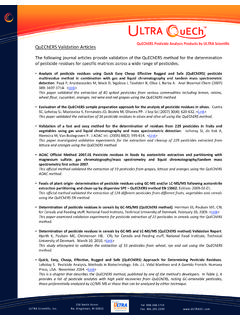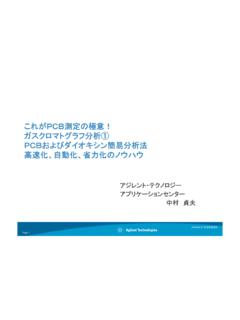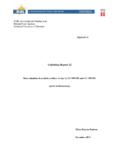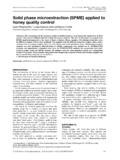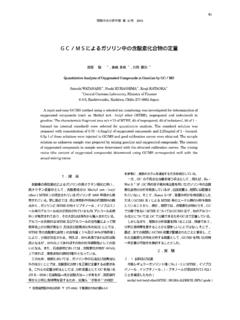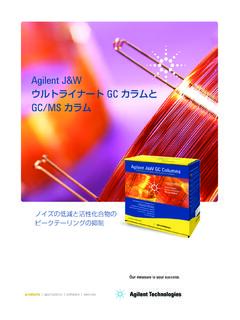Transcription of Reversed-phase HPLC Bu ers - University of Pittsburgh
1 9 Reversed-phase hplc Bu!ersHigh-quality bu!ers (solutions, solids or concentrates)Shyam of the a!ects of pH on analyte retention, type of bu!er to use, and its concentration, solubility in the organic modi"er and its a!ect on detection are important in Reversed-phase chromatography (RPC) method development of ionic analytes. An improper choice of bu!er, in terms of bu!ering species, ionic strength and pH, can result in poor or irreproducible retention and tailing in reverse-phase separation of polar and ionizable , such as, partial ionization of the analyte and strong interaction between analytes and residual silanoles or other active sites on the stationary phases can be overcome by proper mobile phase bu!ering (maintaining the pH within a narrow range) and choosing the right ionic species and its concentration (ionic strength) in the mobile phase (1-2).
2 In sensitive LC-MS separations that depend heavily on the correct choice of acid base bu!ering species and other additives (3). A bu!er must be chosen based on its ability to maintain, and not suppress analyte ionization in the MS !er SelectionThe typical pH range for Reversed-phase on silica-based packing is pH 2 to 8. Choice of bu!er is typically governed by the desired pH. It is important that the bu!er has a pKa close to the desired pH since bu!ers control pH best at their pKa. A rule of thumb is to choose a bu!er with a pKa value <2 units of the desired mobile phase pH (see Table 1).Table 1. hplc Bu!ers, pKa Values and Useful pH RangeBu!er pKa (25 C) Useful pH RangeTFA < < !er Concentration: Generally, a bu!er concentration of 10-50 mM is adequate for small !
3 Er Solubility: A general rule is no more than 50% organic should be used with a bu!er. This will depend on the speci"c bu!er as well as its !er s E!ect on Detection: The choice of bu!er is also dependent upon means of detection. For traditional UV detection, the bu!er needs to be e!ectively transparent in this region, especially, critical for gradient separations. Bu!ers listed in Table 1 have low enough absorption below 220 acid and its sodium or potassium salts are the most common bu!er systems for Reversed-phase hplc . Phosphonate bu!ers can be replaced with sulfonate bu!ers when analyzing organophosphate compounds. With the growth in popularity of LC-MS, volatile bu!er systems, such as TFA, acetate, formate, and ammonia, are frequently used due to compatibility with mass spectral (MS) detection.
4 In regard to the issue of suppression of ionization, formate and acetate are ideal choices for positive-ion mode detection. TFA, however, can negatively impact detector response even in positive-ion mode (4,5), while it strongly suppresses ionization with negative ion mode. Acetic acid is good for negative-ion mode. LC-MS applications further limit bu!er selection and bu!er McMaster, hplc A Practical User s Guide, VCH Publishers, Inc.: New York, NY, 1994; Poole, and Poole, Chromatography Today, Elsevier Science: Amsterdam, The Netherlands, 1991; Analytix, Five-part series on Mobile Phase Additives for LC-MS, Issue 3, 2006 ( ).4. Temesi, D., Law, B., 1999, The E!ect of LC Eluent Composition on MS Response Using Electrospray Ionization, LC-GC, 17 Ap!el, A. et. al.
5 1995. Enhanced Sensitivity for Peptide Mapping with Electrospray Liquid Chromatography-Mass Spectrometry in the Presence of Signal Suppression Due to Tri#uoroacetic Acid-Containing Mobile Phases, J. Chrom. A. 712 Qty. Cat. No. hplc -grade Bu!ers and Additives from Sigma-Aldrich/FlukaAmmonium acetate 50 g, 250 g 17836 Ammonium formate 50 g, 250 g 17843 Ammonium hydroxide solution in water 100 mL, 1 L 17837 Ammonium phosphate monobasic 250 g 17842 Ammonium tri#uoroacetate 10 g, 50 g 17839 Potassium phosphate dibasic anhydrous 250 g 17835 Sodium formate 50 g, 250 g 17841 Sodium phosphate dibasic dehydrate 250 g 71633 Sodium phosphate monobasic anhydrous 50 g, 250 g 17844 Sodium tri#uoroacetate 10 g 17840 Tri#uoroacetic acid:Triethylamine 2M:1M 500 mL 09746 Tri#uoroacetic acid:Triethylamine 2M:2M 100 mL 09747 For a complete list of hplc bu!
6 Ers and additives, please refer to our online product catalog: Products+
